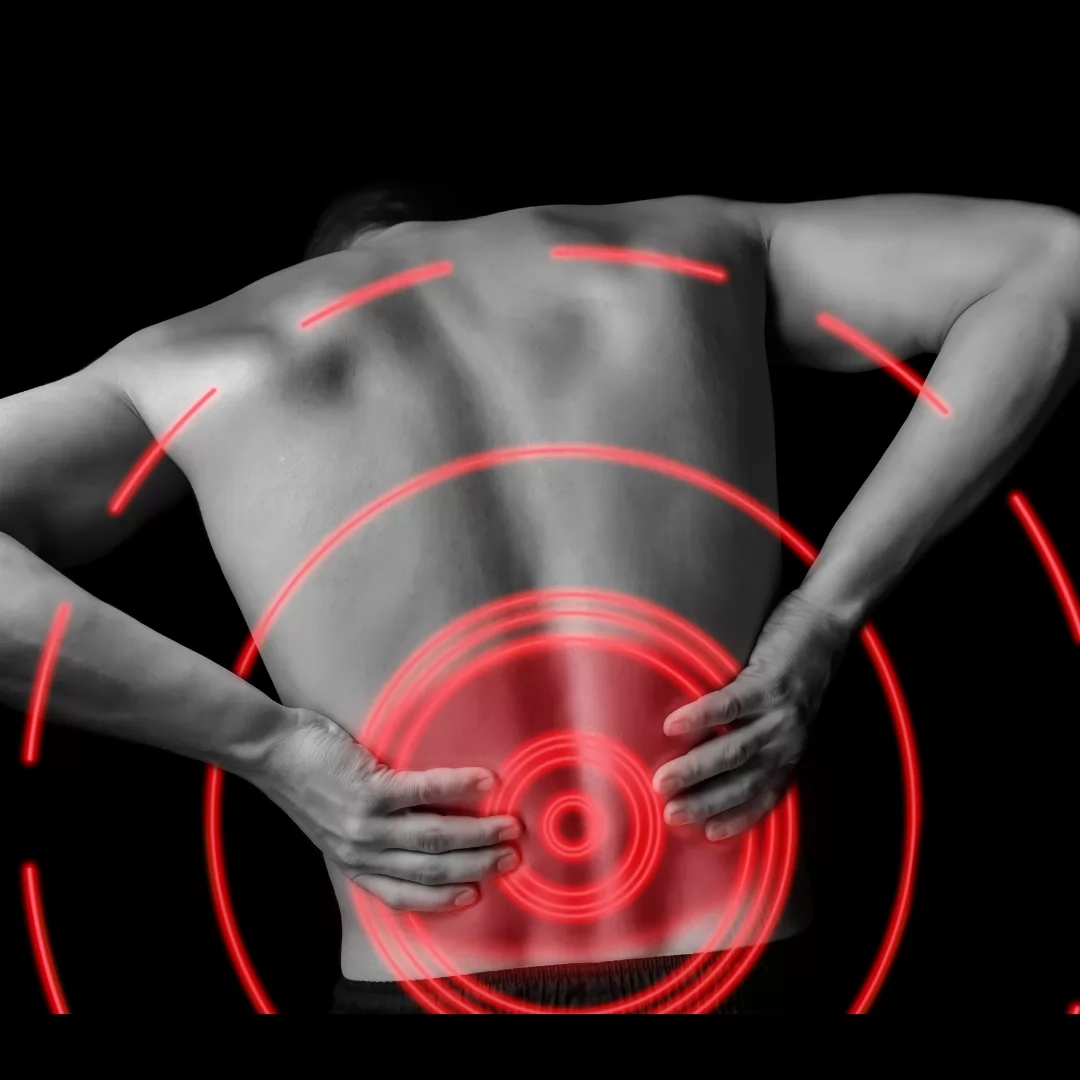Low Back Pain
It is the pain of the spinal region between the 12th rib and the iliac crest. Low back pain is one of the most common causes of pain. 85% of adults complain of pain in the lumbar region at least once in their lifetime. 2% of low back pain is herniated disc.
When low back pain is severe or long-lasting, it negatively affects people's daily and business lives. It significantly reduces their quality of life.
Symptoms of Low Back Pain
- Back pain and cramping
- Limitation of movement
- Pain and numbness radiating to the leg; tingling and weakness
- Limping
- Contortion on one side of the body
- Sometimes urinary incontinence
Who Occurs Low Back Pain?
- A sedentary work and lifestyle, mostly sitting down.
- Obesity,
- Lifting heavy things
- Combat sports,
- Unconscious exercise,
- Incorrect sitting and posture habits,
- Dislike to the job
- Living in a restless environment and stress,
- Smoking and alcohol habits
- Driving for a long time,
- Starting physical activities without warming up is a risk factor.
The more these risk factors having a person's daily life; The person is likely to experience low back pain.
Prevention Of Low Back Pain
- Regular exercise to keep the back muscles strong and flexible.
- Applying correct technique when lifting weights (lifting all objects close to the body, avoiding twisting, bending forward, or reaching while lifting the object)
- Maintaining of appropriate body weight and not smoking.
- Taking care to be in the proper position when standing or sitting
Diagnosis Of Low Back Pain
At the initial stage it is important to distinguish whether the pain is due to mechanical causes or other causes that can be much more serious. In the examination, it is necessary to evaluate not only the waist, but also the entire spine, even the body. If necessary after physical examination; X-rays, blood tests and further tests are requested.
How Low Back Pain Occurs
Narrowing in the Spinal Canal (Narrow Canal-Spinal Stenosis): It is caused by the narrowing of the canals through which the spinal cord and nerves pass, and compression of the nerves. It manifests itself with pain, numbness and limping in the legs, especially when who have been walking a certain distance in advanced ages.
Slipping of the Vertebrae (Spondylolisthesis) and Deformities: The slipping of the lumbar vertebrae on each other is called “Spondylolisthesis”. Pain increases with movement. In addition, curvatures in the waist (scoliosis), flattening (lordosis), span in the waist (spina bifida), excess or missing lumbar spine (lumbalization-sacralization) can cause low back pain.
Tension, Stress, Smoking: It is the most important reason that increases and chronics low back pain. Your economic, social and psychological problems increase back pain. Laughing, working, social activities and commitment to life are our most important weapons against low back pain.
In smokers, blockages occur in the veins that go to the waist area. In this case, the destruction of the disc is faster and the healing of the bone is delayed.
Overweight: It is inconvenient for as it increases the amount of load carried by our waist.
Calcification-Osteoarthritis: While the advancing age, the bone structure, ligaments and discs begin to wear out. Bone loses its calcium content and breaks more easily. To prevent this, the body; This calcifies the worn tissues and wants to immobilize them. The newly formed ossicles, petrified ligaments and narrowed disc spaces can press on the nerves and cause back, waist, leg and general body pain.
Osteoporosis, Bone Tinning: Osteoporosis is basically a women disease. It causes hollowness and softening of the bones, causing easy fracture and thus pain.
Dietary calcium and vitamin D deficiency, sedentary life, early menopause, excessive alcohol consumption, smoking, corticosteroids increase the risk of osteoporosis.
Rheumatismal: It develops as a result of the body's immune system waging war against its own cells. Normal bone and cartilage tissues in the spine are damaged. Diseases such as Rheumatoid Arthritis, Ankylosing Spondylitis cause pain and swelling in the joints and limit daily movement. Joint stiffness in the morning is a warning for rheumatic diseases.
Low Back Pain Treatment Methods
Medication: Painkillers and muscle relaxants are frequently used. These allow to speed up the repair of the injury site. However, it is necessary to be careful especially in terms of side effects on the gastrointestinal system.
Rest: Long-term bed rest is no longer recommended for patients who have low back pain. On the contrary, it is necessary to motivate the patient to return to daily life and exercise by getting them out of bed as soon as possible.
Corset application: The use of a corset can be applied from time to time in very painful cases, provided that it is for a short time. However, if the patient makes the corset a habit; It should be avoided as it will cause loss of self-confidence, weakening of the muscles and loss of flexibility.
Physical therapy methods: Deep and superficial heat application, cold application, electrotherapy, massage, traction (intermittent waist pulling with an automatic machine), exercise therapy are the most effective and reliable methods to return the patient to daily life in a short time, provided that the appropriate one is chosen for the patient.
Surgical approach: In patients who cannot be cured by other methods; The pressure on the nerve is removed by surgery and the patient's pain is relieved. In case of appropriate indication, that is choosing the right patient, the rate of benefit from herniated disc surgery is very high.
